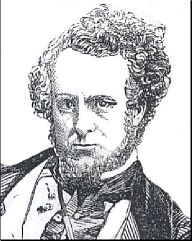Staunton Chess Origin
The History
Every chess set design in our luxury range carries an official certificate of authenticity. ChessBaron is a respected industry expert on the manufacture of fine chess pieces, including the wood types used, their value and their durability. The certificate of authenticity provided by the company represents ChessBaron as official confirmed dealer and agent of the artisan of that specific chess design. The document details when and how it was produced and the name of the company involved in it’s production, including it’s title and dimensions. The document is official and can be confidently utilised in any subsequent resale of the product.
How did the Staunton Style Arise?
Introduction
The increased interest in chess in social and international play during the late eighteenth and early nineteenth centuries, brought about a consistent demand for a more standard universal model for chess pieces. The variety and styles of the conventional form begun in the fifteenth century had expanded tremendously by the beginning of the nineteenth century. Some of the more common conventional types popular during the period included the English Barleycorn, the St. George, the French Regence ( named after the Cafe de la Regence in Paris ) and the central European Selenus styles. Most pieces were quite tall, easily toppled and cumbersome during play. But their largest problem was the uniformity of the pieces within a set. A player’s unfamiliarity with an opponent’s set could tragically alter the outcome of a game. By the early decades of the nineteenth century, it became very clear that there was a great need for a playing set with pieces that were easy to use and universally recognized by players of all backgrounds. The solution, first released in 1849 by the purveyors of fine games, John Jaques of London, sport and games manufacturers, of Hatton Garden, London, England, was to become known as the Staunton chess set after the Shakespearean scholar, author and the current world champion, Howard Staunton ( 1810 – 1874 ).
Staunton Chess Origin – Jaques and Staunton

Nathaniel Cook has long been credited with the design,but it may have actually been conceived by his brother-in-law and owner of the firm, John Jaques. The first theory is Mr. Cook had used prestigious architectural concepts, familiar to an expanding class of educated and prosperous gentry. London architects strongly influenced by Greek and Roman culture were designing prestigious buildings in the neoclassical style. The appearance of the new chessmen was based on this style and the pieces were, in reality, symbols of respectable Victorian society: a distinguished bishops miter, a queen’s coronet and the king’s crown. Then there was a knight carved as a stallion’s head from the ancient Greek Elgin Marbles and a castle streamlined into clean classical lines, projecting an aura of strength and security. The form of the pawns was based on the ‘Freemasons square and compasses’, however; another theory reflects the pawns form is derived from the balconies of London Victorian buildings. There were also practical innovations that failed to stick: for the first time a crown emblem was stamped onto a rook and knight of each side, to identify their positioning on to the king’s side of the board.
A second theory is Jaques, a master turner, may have been experimenting with a design that would not only be accepted by players but could also be produced comparitively economically. In the end, he most likely borrowed and synthesized elements from sets already available to create a lasting design of sheer brilliance. The key was the use of universally recognizable symbols atop conventional stems and bases. Moreover, the pieces were compact, well balanced and weighted to provide a playing set that was as useful as it was understandable.
Staunton Chess Origin – Marketing Staunton
Many chess historians believe that it was a combination of both theories with the synergy of Mr. Cook the entrepreneur and Mr. Jaques the artisan. See our article on staunton chess design with some humour attached! Now, moving on, further to the design, and to add finesse, the ebony and boxwood sets were weighted with lead to provide added stability and the underside of each piece was covered with felt. This afforded the players the illusion that the chessmen were floating across the board. Some ivory sets were made from African ivory. The king sizes ranged from 3.5 inches to 4.5 inches and the sets typically came in a caron-pierre case, each one bearing a facsimile of Staunton’s signature under the lid.
Then Jaques approached his brother-in-law for advice. At the Patent Office, on March 1, 1849, Nathaniel Cook, 198, Strand, London, England, registered an Ornamental Design for a set of Chess-Men, under the Ornamental Designs Act of 1842. At that date, there was no provision for the registration of any design or articles of ivory, registration was limited to Class 2, stipulating articles made chiefly of wood. Mr. Cook was the editor for the Illustrated London News where Howard Staunton published chess articles and he convinced the champion Staunton to endorse the chess set – a marketing move that would be the envy of marketing companies then and now. The advertisement possibly written by Mr. Staunton published as follows:
“A set of Chessmen, of a pattern combining elegance and solidity to a degree hitherto unknown, has recently appeared under the auspices of the celebrated player Mr. STAUNTON. A guiding principle has been to give by their form a signification to the various pieces – thus the king is represented by a crown, the Queen by a coronet. The pieces generally are fashioned with convenience to the hand; and it is to be remarked, that while there is so great an accession to elegance of form, it is not attained at the expense of practical utility. Mr. Staunton’s pattern adopts but elevates the conventional form; and the base of the Pieces being of a large diameter, they are more steady than ordinary sets.” Illustrated London News, September 8, 1849.
Staunton Chess Origin – Entry into the mainstream
Staunton not only endorsed the product for Jaques of London but aggressively promoted it including the derision and lambasting of any other design of chess pieces then proposed. This may have been the first time that a celebrated name was used to promote a commercial product. The Staunton as it became known, became available to the general public on September 29, 1849. The Staunton style, was soon the standard on which most tournament playing pieces have been made and used around the globe ever since. The low cost to produce the Staunton set allowed people of most economic circumstances to purchase sets and helped to popularize the game of chess.
The Staunton set obtained the stamp of approval of the World Chess Federation in 1924, when it was selected as their selection of chess set, for use in all future national and international chess tournaments. For over a century and a half, this style has been cherished by players around the world. The superiority of the design lay in its well-balanced, easily recognized pieces. Such was its success that it will surely be the style of choice for tournament play to this day and many to come.
Further Reading…

